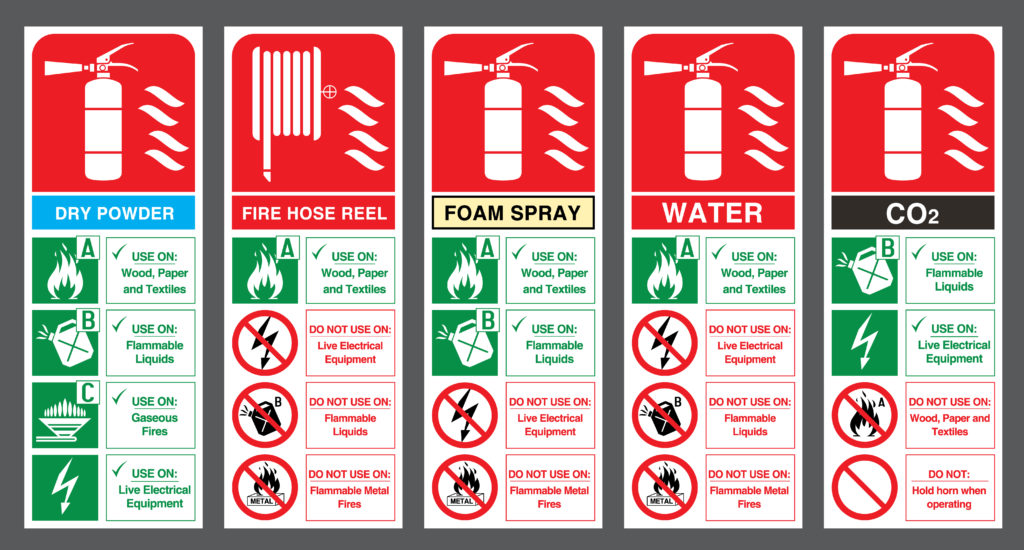Fire Safety in the Home

GEMMA COLLINS DOYLE
EHS Consultant
EazySAFE
We are in our homes a lot more these days, using a lot more energy and a lot more appliances! If you have never thought about fire safety in your home, then please do not put it off. Review it now and plan, it’s never time wasted.
Fire Safety in the Workplace
I will be the first to admit, I would be more fire safety “aware” in the workplace than at home. Fire safety should be part of a company induction and training will be given to most employees, either with fire warden training, fire extinguisher training, evacuation training and drills or just general fire safety. I wonder though, do many of us take this knowledge back to the home? It would be such a positive if we did.
Waking up to flames and smoke, is with no doubt, one of the most terrifying things that could happen to you and your family in your home. Most home fires are preventable so all it takes to help keep your home and family safe, is some fire safety preparation and prevention. From making sure your smoke detectors are working to creating a simple evacuation plan.
Let us take a look at how you can manage fire safety in the home:
- Install and maintain smoke detectors on every floor of your home. Around 50% of home fires happen when people are sleeping.
- Never leave food cooking unattended – especially deep fat fryers or any other types of frying equipment
- Where possible, avoid using portable heaters
- Do not smoke inside and never leave candles unattended
- Make an evacuation plan that all the family know about and that gets you out of the house in two minutes
- Do not overload electrical sockets or use extension leads for long periods of time. Avoid dust build up on electrical devices.
Electrical Safety
Poor electrical safety is one of the leading causes of fires in the home. Firstly, make sure you hire a qualified electrician when you are getting any electrical work done, you wouldn’t accept anything less in the workplace, so you should have the same standards for your home.
It’s also really important to check electrical cords regularly, they can become worn and damaged over time. Remember, it’s better to replace rather than trying to repair it yourself. Avoid overloading an electrical outlet as it can trip a breaker and also start a fire. Follow the wattage information on all lights and lamps, do not use bulbs that exceed the maximum wattage, the guidance is there for a reason!
Switch off as many electrical devices as possible, even better, plug them out or turn them off at the switch. Never leave chargers plugged in with no device attached.
Smoke Detectors
It is recommended that there should be a least one smoke detector on every floor and four in total in the average sized home.
Smoke alarms should be mounted high on a wall or on the ceiling. Remember, smoke rises.
Every smoke alarm should be tested at least monthly, you can do this by pushing the “test” button and batteries should be changed when required. It is a good idea to have spare batteries, no one likes listening to that chirping noise a smoke alarm makes when the battery is low!
Smoke detectors can save your life, so treat them like what they are, life savers! Maintain them and test them and they will not let you down.
Fire Extinguishers
Having a fire extinguisher in the home, may allow you to tackle the fire safely without having to call the fire brigade and could reduce fire damage.
There are five different types of fire extinguishers for putting out different types of fires. Most homes will have one that is multipurpose, the ABC Dry Powder extinguisher is a multi-purpose extinguisher ideal for domestic use and suitable for fires involving combustible solids, flammable liquids, and gases.

How to use an extinguisher:
- Pull the pin. Hold it with the nozzle pointing away from you.
- Aim low and point the nozzle to the base of the fire.
- Squeeze the lever slowly.
- Sweep the nozzle slowly from side to side.
- Fire blankets are also recommended for use in the kitchen area.
Fire Escape Plan
With a fire in the home, every second counts. If you have a plan in place then you will be ahead of the situation. Aim to be out of your home in under two minutes.
Just like you do in the workplace, make sure all members of the family know what the alarm sounds like, what to do when they hear it and how to call the emergency services.
Here are some tips to create your own fire escape plan:
- Draw a plan of your whole house, which shows the doors and windows
- Go through it with everyone in your family
- Find at least two exit points for every room, if possible (including windows)
- Once outside, everyone should gather at the same point, safely away from the house
- Remember, never ever re-enter a burning house
Check out our ‘Emergency Evacuation for the Home’ Infographic here.
Handy tips
Keep all matches, lighters and candles away from children and teach them the dangers of fire.
Here are some basic things to teach your children, so they know what to do in the even of a fire emergency:
- Teach children that if a doorknob or handle is hot, do not open the door
- Teach children how to “stop, drop and roll”
- Teach children to crawl on their hands and knees if they see smoke
- Teach them how to raise the alarm and not hide in a wardrobe or under the bed!
Being prepared is the best way you can protect your family and home against fire. It pays to be prepared and takes steps to reduce the risk of a fire in the home. If you follow the three P’s – prevent, plan and practice you can rest easy that you have done all you can to keep your home and family safe.
For EHS Support, please get in touch.

Discover our Safety Training Platform
Train your employees anytime, anywhere with our environmental, health, safety and wellness training platform.

TAILORED TRAINING
Discover our safety training courses and ehs onboardings, which can be customised and offered in several languages.

SAFETY MANAGEMENT
Ensure the distribution of your safety policy by training your permanent, temporary or seasonal staff.

GLOBAL MONITORING
Simplify the management of your safety policy thanks to the numerous dashboards and training reports.
